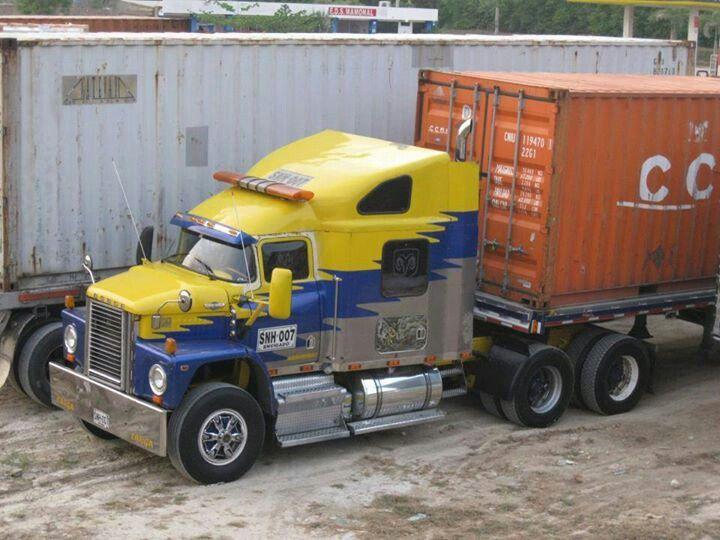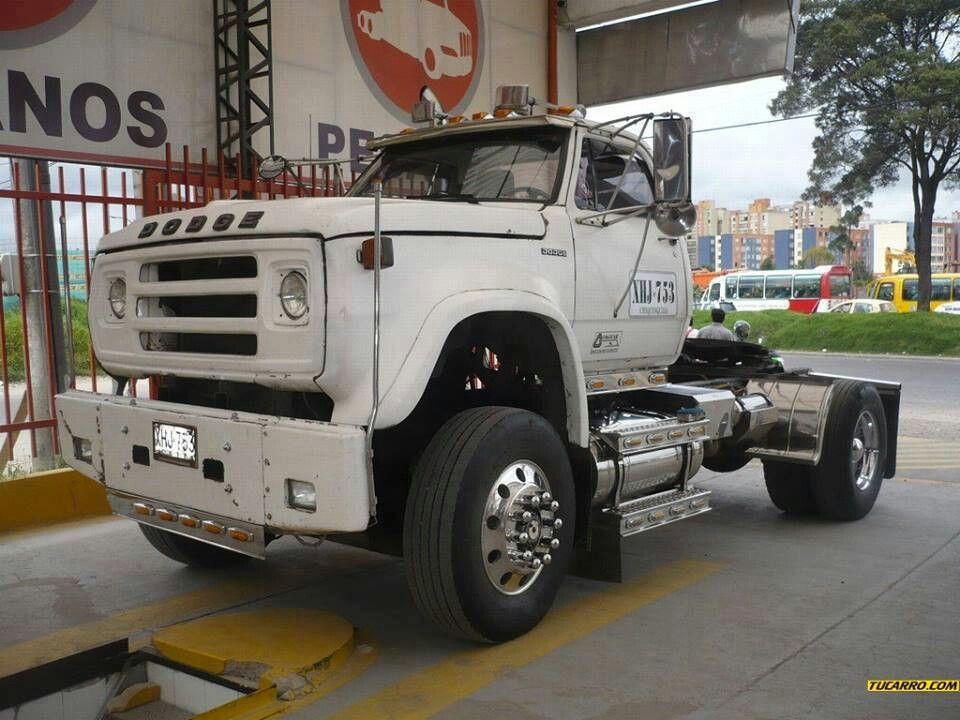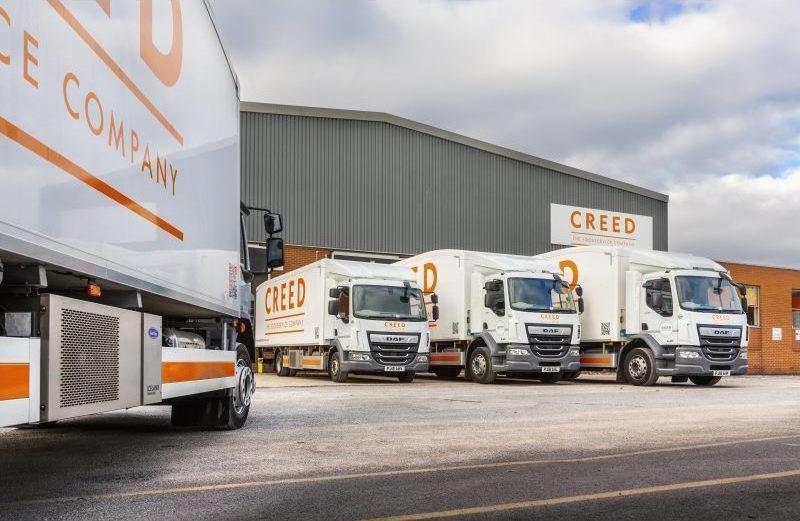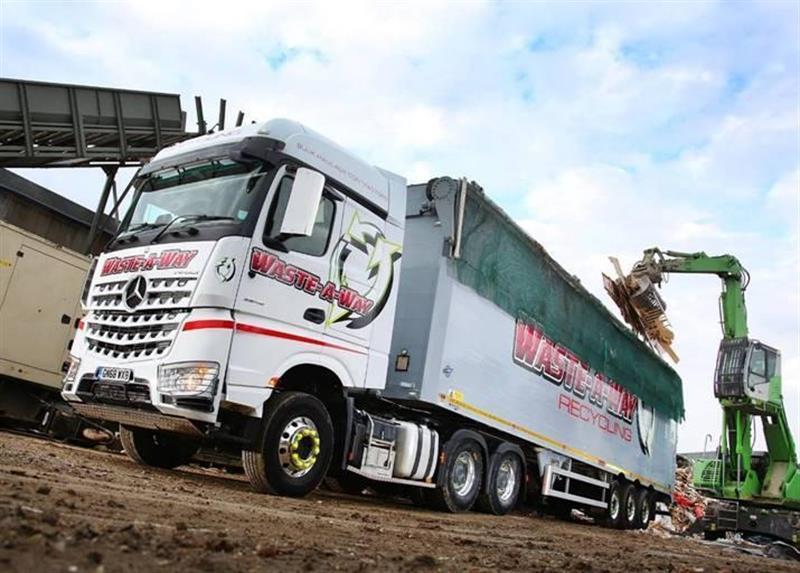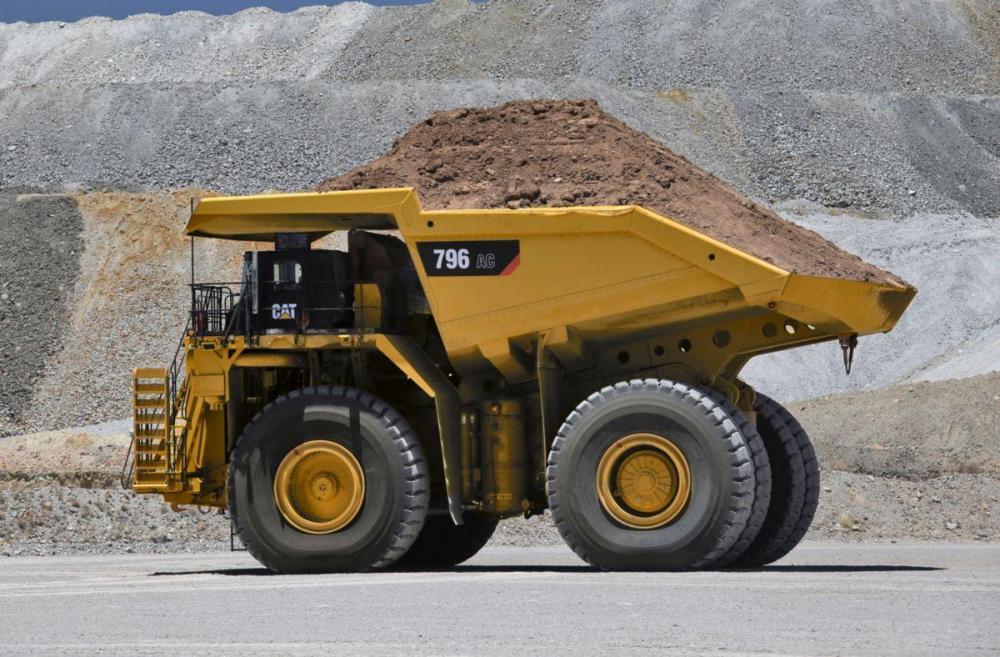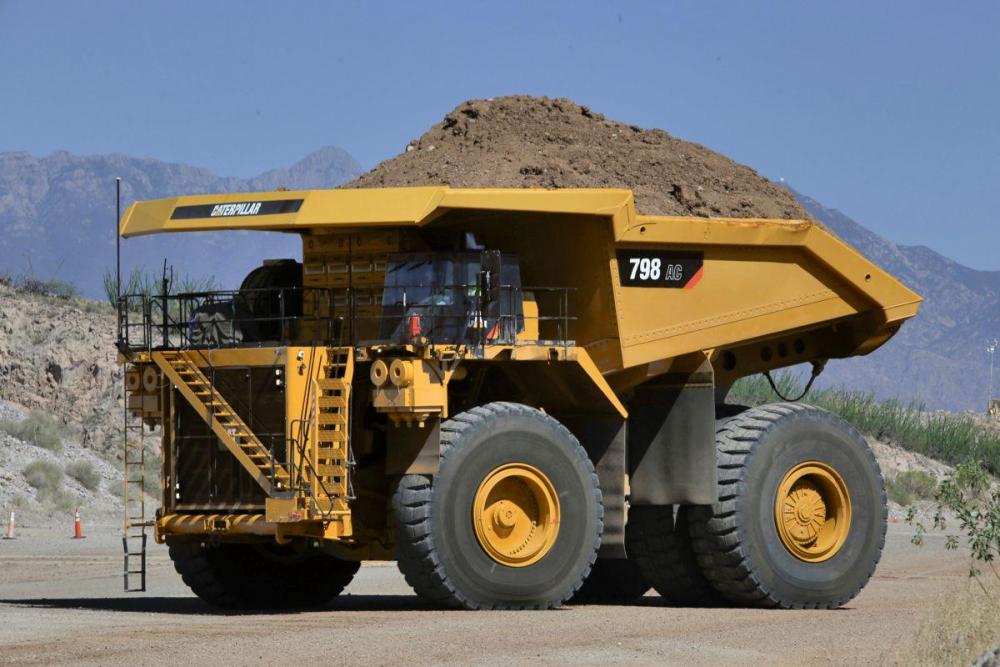
kscarbel2
Moderator-
Posts
18,550 -
Joined
-
Days Won
112
Content Type
Profiles
Forums
Gallery
Events
Blogs
BMT Wiki
Collections
Store
Everything posted by kscarbel2
-
Isuzu copied the Chinese.
-
The round insulator is a 9QM142. The rectangular insulator is a 35RC178 (molded FOMOCO) because Ford used it too.
-
That is a 55MX26. But he should confirm by model and serial number.
-
General Motors plans to close Canadian assembly plant Reuters / November 25, 2018 TORONTO - General Motors is planning to close all operations at a plant near Toronto and an announcement is expected on Monday. The plant closure in Oshawa in the province of Ontario is expected to affect thousands of high-paying jobs. The plant has been in operation since 1953 and has built models for Pontiac, Chevrolet and Buick. Currently, Oshawa builds the Cadillac XTS, the Chevrolet Impala, the Chevrolet Silverado and the GMC Sierra. The plant closure is part of global restructuring. A Canada-based GM spokesman refused comment. GM employs about 2,500 union staff and roughly 300 salaried employees in the Oshawa area. GM has other operations in Canada, including a plant in Ingersoll, Ontario, where it assembles Chevrolet Equinox. The Canadian union Unifor said in a statement on Sunday that.General Motors is set to make a major announcement on Monday that will affect its global operations. “Unifor received notification today from General Motors that the company will make a major announcement tomorrow that will impact its global operations. While the union does not have complete details of the overall announcement we have been informed that, as of now, there is no product allocated to the Oshawa Assembly Plant past December 2019. Based on commitments made during 2016 contract negotiations, Unifor does not accept this announcement and is immediately calling on GM to live up to the spirit of that agreement. Unifor is scheduled to hold a discussion with General Motors tomorrow and will provide further comment following the meeting.”
-
The RS hood roller mounting arrangement can not be compared with an R-model, 1975 non-air ride or later air-ride cab. The parts are different. When you contacted Watt's Mack with your model and serial number, what did they say on availability?
-
Bigland takes over as president & CEO of Ram Truck Brand
kscarbel2 replied to kscarbel's topic in Trucking News
Bigland will steer Ram again in FCA management overhaul Michael Wayland, Automotive News / October 1, 2018 Fiat Chrysler Automobiles CEO Mike Manley’s new executive leadership team will be a mix of American and European executives, as he looks to complete an aggressive five-year plan orchestrated by his late-predecessor, Sergio Marchionne. He announced the executive appointments, effective immediately, in a letter to employees on Monday: Reid Bigland, 51, will once again lead the automaker’s Ram [Dodge Trucks] brand. He previously led Ram in 2013-2014. Bigland will retain his roles leading our Canadian operations and U.S. sales. Bigland came to Chrysler in July 2006 from Freightliner. · 2014 - current, Head of Alfa Romeo Brand, FCA - North America · 2014 - current, Board of Directors, FCA US LLC (formerly Chrysler Group LLC) · 2013 - President and CEO, Ram Truck Brand · 2011 - current, Senior Vice President - U.S. Sales, FCA - North America · 2011 - current, GEC, Fiat Chrysler Automobiles N.V. (formerly Fiat S.p.A.) · 2011 - President and CEO, Dodge Brand, FCA US · 2006 - current, Chairman, President and CEO FCA Canada Inc. (formerly Chrysler Canada Inc.) · 2005 - President, Freightliner Custom Chassis Corporation · 2002 - General Manager Dealer Operations, Freightliner LLC · 2001 - Director Vocational Sales, Freightliner LLC · 1999 - Director U.S. Sales, Western Star Trucks · 1997 - Director Human Resources, Western Star Trucks -
Bigland takes over as president & CEO of Ram Truck Brand
kscarbel2 replied to kscarbel's topic in Trucking News
-
http://dieciochoruedas.blogspot.com/2018/11/nuevo-volvo-vnlvnr-tiene-un-aprobado.html http://justacarguy.blogspot.com/2015/04/if-you-have-noticed-swift-trucking.html
-
India has officially selected Russian firm Rosoboronexport as the winner for Indian Army’s $1.5 billion Very-Short-Range Air Defence (VSHORAD) program. India's Ministry of Defense said the VSHORAD contract will Russia will have no impact of U.S. sanctions on Russia under the Countering America’s Adversaries through Sanctions Act (CAATSA) because India will make payment in Indian rupees. The Indian Army floated a restricted global tender in 2010, with requests for bids from Saab of Sweden, Rafael of Israel, MBDA and Thales of France, Raytheon of United States, Rosoboronexport of Russia and LIG Nex 1 of South Korea. Rafael, Thales and LIG Nex 1 did not qualify the technical evaluation while Raytheon did not participate in the competition. Following a technical evaluation in 2012, MBDA, Rosoboronexport and Saab were selected for trials. In a Nov. 19 meeting with the three finalists — Rosoboronexport, MBDA of France and Saab of Sweden — officials from India declared the Russian firm’s Igla-S system the winner.
-
Laura Cork, Transport Engineer / November 23, 2018 Gloucestershire-based Creed Foodservice has specified its first Carrier Transicold Iceland Twincool engineless refrigeration systems for 12 new DAF LF rigid trucks, declaring the system “perfectly suited” to its fleet operation. Creed Foodservice chose the Iceland undermount units because of their ability to run on power derived from the truck’s Euro VI diesel engine via Carrier Transicold’s Eco-Drive power module, which uses a hydraulic pump connected to the truck engine’s PTO. The variable displacement pump drives a generator, which delivers electrical power to the unit and provides 100% refrigeration capacity even when idling – a frequent occurrence on the urban routes from Creed’s Gloucestershire, Ilkeston and High Wycombe depots. In addition, removing the need for a separate diesel engine for the refrigeration unit helps to reduce emissions, boosting the fleet’s green credentials. “These new trucks help to future-proof our fleet and ensure we are using the latest transport refrigeration technology with a much smaller environmental footprint,” said Richard Frost, operations controller at Creed Foodservice. “When we took into account the benefits of Carrier’s multi-temp, engineless solution, it became clear that this system was perfectly suited to our fleet requirements. The results so far have been fantastic; moving forward I expect we’ll be looking to roll out the same Carrier Transicold systems to any new vehicle in our fleet.” The new vehicles will be on the road six days a week and will cover an average of 80,000km a year, delivering chilled and frozen produce on multi-drop routes to Creed’s customers throughout the UK. .
-
Laura Cork, Transport Engineer / November 22, 2018 Basildon-based waste and recycling operator Waste-A-Way has taken delivery of 14 new Mercedes-Benz Arocs, declaring the robust model to be “ideally suited” to its operations. Supplied by dealer Sparshatts Truck & Van, the new additions are all double-drive Arocs 2648 models, with BigSpace cabs and 12.8-litre, straight-six engines producing 476bhp. The order comprises 10 replacements and four additions; all were supplied with funding from Mercedes-Benz Financial Services. They join a 38-strong tractor fleet, pulling walking floor trailers. The operator collects commercial and domestic waste from transfer stations in Essex and Kent, transporting it to recycling centres. Sometimes vehicles go to landfill sites, so all but three of its tractors are 6x4 variants and the latest vehicles are built to N3G (off-road) specification. Waste-A-Way’s director Ian Whitehair says: “With Sparshatts’ support, Mercedes-Benz trucks work really well for us, particularly the Arocs, which is impressively strong and robust, so ideally suited to our kind of work.” The new arrivals have a higher rated engine than others on the fleet, says Whitehair: “The extra bit of power for hills seems also to be resulting in slightly better fuel efficiency – we’re getting 5.8-6.2mpg, which is excellent for this job, not least because the tractor units power the hydraulics for tipping.” The trucks are inspected and maintained under Mercedes-Benz Complete Service contracts at Sparshatts’ workshops in Dartford and Sittingbourne. .
-
Civi MACK NO with pipes
kscarbel2 replied to 41chevy's topic in Antique and Classic Mack Trucks General Discussion
http://www.hankstruckpictures.com/robert_lafreniere_miron_mobile_equipment02.html https://www.flickr.com/photos/83724340@N05/albums/72157631139389322 -
Caterpillar Press Release / November 2018 Caterpillar continues to expand its mining truck offering to give mining companies the flexibility to choose what meets their needs and preferences. Following the successful introduction of the 794 AC 291-tonne (320-ton) capacity truck at MINExpo 2016 and investments to further advance the 797F 363-tonne (400-ton) mechanical-drive truck, Caterpillar is now introducing the 798 AC and the 796 AC. The new electric-drive 798 AC features a 372-tonne (410-ton) payload and will join the fleet of over 1,000 Cat® mechanical-drive 797s in the 400-short-ton class. The new electric-drive 796 AC delivers 326-tonne (360-ton) payload and will be offered in all regions. The 795F AC, in the same size class, will continue to be offered in regions where engine emissions are less regulated. Both trucks will be available in second quarter 2019. The design of the new trucks focuses on delivering class-leading payload, high reliability and simple serviceability. These attributes are built on the frame and chassis design proven in 18 million hours of legacy truck operation and now used by the Cat 794 AC. The AC powertrain of each of the two new trucks draws from about 5 million hours of Cat 795 AC and Cat 794 AC truck operation. Cat AC electric drive is developed and manufactured by Caterpillar, the single source for the entire powertrain. The Cat C175-16 diesel engine powers both of the new trucks. With more than 21 million hours of operation in mobile equipment and power generation, the reliable engine can be configured to meet US EPA Tier 4 emissions regulations and offers a choice of 2610 kW (3,500 hp) or 2312 kW (3,100 hp) to meet the mine’s needs. To further adapt to the mine, simple software changes can adjust system power to help meet production targets or to work smoothly in mixed fleets. High productivity and lower cost per ton The 796 AC and 798 AC are built for efficient production. Both truck models are designed to minimize empty machine weight, as configured in the field. The design enables the 798 AC to carry its class-leading payload of 372 tonnes (410 tons) and to haul more material each cycle on 59/80R63 tires. The new trucks feature four-corner, oil-cooled disc brakes as well as dynamic retarding for stable handling and confident stopping. Superior retarding capability, blended braking and the Cat Traction Control System help boost productivity while enhancing safety. The Cat AC drive is a high voltage system (2,600 volts) that operates at lower current than the most other competition. When combined with Cat’s total integration and design of the truck and drive system the result is higher efficiency, lower heat generation, smaller and lighter components, and longer component life. The Cat High Efficiency (HE) Body is sized and configured to meet the specific needs of the mine, dictated by fragmentation, abrasion, cohesion and the loading tool. The curved floor, front, and canopy strengthen the entire body, which is integral to the truck. The body is sized to meet the payload requirements without compromising vehicle balance, braking or control. Open engine access and service platforms ease maintenance tasks. The modular design allows for easy removal and installation of components. The engine, traction alternator, motors, inverter, grid and final drives can be removed independently. Traction alternator and optional inverter platforms allow for easier inspections, diagnostics and component swaps. The result is less service time and greater uptime. .
-
If mankind wasn't perpetually side-tracked with power, greed and violence, we could be in high gear developing the technology to ensure the survival and defense of our planet, and developing the means for advanced means of space travel (we may in fact already be there).
-
Bob, I fully expect to see the 5.1-litre 4-cylinder A05 here. It replaces the 6.4-litre 5-cylinder J07. The A05 follows the trend in the segment from 6- to 4-cylinder powerplants (that the China market started) on the heels of the Isuzu 5.2-litre 4HK1-TC and 5.1-litre Detroit Diesel DD5 (aka. Mercedes-Benz OM934).
-
Hino says new 500 Series Standard Cab the cleanest ever Trade Trucks AU / November 22, 2018 Hino is claiming that its new 500 Series Standard Cab will have the cleanest exhaust emissions of any Japanese-built medium duty truck in Australia, equivalent to Euro 6, when it is launched towards the end of November. Hino believes this is a significant step forward on exhaust emissions in this class of truck. It adds that all models within the new Hino 500 Series Standard Cab range will comply with Japan’s stringent post-Post New Long Term (pPNLT) exhaust emissions standard, which is comparable to Euro 6. Daniel Petrovski, Hino Australia’s manager of product strategy says there’s an understandable global push for ever-cleaner trucks. "In Australia we have many customers who have their own environmental impact reduction targets, so by complying with pPNLT early, our new product range is ahead of the game providing a significant advantage for these customers. "While discussions regarding the introduction of the next exhaust gas emission regulations by the Australian Government are ongoing and the timeline uncertain, it is expected that the European (Euro 6) or Japanese (pPNLT) emissions standards will be two of the acceptable solutions," Petrovski says. "With the all-new 500 Series Standard Cab, Hino Australia will comply with the expected new Australian emissions regulations, years ahead of their introduction." The exhaust gas after-treatment unit in the new Hino 500 Series Standard Cab contains a Selective Catalytic Reduction (SCR) system and Diesel Particulate Reduction (DPR) system. "These two proven exhaust emissions solutions have been used by Hino in the Australian market since 2011 in thousands of vehicles," Petrovski explains. The exhaust gasses enter the SCR system first, where this system converts oxides of nitrogen (NOx) into nitrogen and water through a chemical reaction with a reducing agent (urea) that is absorbed into a catalyst. "The new model uses a very small percentage of AdBlue, with the AdBlue tank requiring to be refilled approximately one time for every three diesel tank refuels. When compared to the current model, Hino expects fuel consumption savings on the new model to be greater than the AdBlue consumption in many applications. "The current cost per litre of Adblue at service station pumps of approximately $1 per litre is significantly less than the cost per litre of diesel, which further helps SCR make a positive impact on our customers’ environmental and financial targets," Petrovski says. The DPR component of the exhaust after treatment comes after the SCR and as with the previous 500 Series Standard Cab, the DPR captures the unburnt Particulate Matter (PM) within the DPR filter. The DPR filter accumulates PM and actively regenerates to clean the filter. "When compared with our current Hino 500 Series Standard Cab model range, the all-new 500 Standard Cab range will have improved performance, improved fuel efficiency, improved drivability, and the cleanest exhaust emissions of any Hino truck yet," Petrovski says.
-
All-new Hino 500 series showcases substantial advances in safety
kscarbel2 replied to kscarbel2's topic in Trucking News
. . . -
Prime Mover Magazine / November 22, 2018 Autonomous Emergency Braking, Vehicle Stability Control and exhaust emissions compliance with Euro 6 are just some of the standout features of Hino’s all-new 500 Series Standard Cab officially launched this week. “The level of safety in this truck has never been seen in any Japanese-built medium-duty truck in Australia,” said Hino Australia Manager of Product Strategy, Daniel Petrovski. “This is complemented by the superior torque, increased power and reduced fuel consumption of the all-new A05 five-litre four-cylinder engine,” he said. Headlining the substantial leap forward in safety is the Pre-Collision System (PCS) incorporating Autonomous Emergency Braking (AEB), Pedestrian Detection (PD) and Safety Eye (SE). The new truck also includes Adaptive Cruise Control (ACC) and Lane Departure Warning (LDW). ACC utilises the SE to continuously scan the road ahead. If a slower vehicle is detected it reduces engine power and engages the engine brake to match the speed of the slower vehicle. LDW is designed to alert the driver, both visually on the Multi-Information Display and audibly through the speakers, if the vehicle deviates from its lane without the turn indicators being triggered. Another active safety feature that Hino says is unique among Japanese medium-duty contenders is the standard inclusion of Vehicle Stability Control (VSC) incorporating Anti-Lock Braking (ABS) and traction control. According to Hino, this makes it the only Japanese manufacturer to offer VSC as standard equipment on every on-road model in its 300 and 500 Series ranges, from the 300 Series car licence model through to the 350hp heavy-duty 500 Series FM 6x4 models. Further inbuilt safety technology includes a standard reversing camera complete with infrared night vision capability and a microphone. In addition, the new 500 Series Standard Cab range sports an impressive suite of passive safety features including a driver’s airbag, UN ECE R29 cab strength rating (single cab) and ADR 84/00 compliant Front Underrun Protection.
-
Prime Mover Magazine / November 22, 2018 Improved performance and operational efficiency, along with reduced emissions are hallmarks of the all-new A05 five-litre four-cylinder engine powering the newly launched Hino 500 Series Standard Cab range. The A05 is a derivative of the larger A09 six-cylinder engine fitted to the 700 Series heavy-duty models in Japan and the heavy-duty 500 Series Wide Cab models in Australia. The A05 has the same dimensions in terms of cylinder bore and crankshaft journal diameters as its ‘big brother,’ the A09. “A variant of the A09 also powers the Hino Dakar Rally team’s “Little Monster’’ race truck,” said Daniel Petrovski, Hino Australia Manager Product Strategy. The new A05 engine has three power ratings which are dependent on the model selected – the FC 1124 and FD 1124 models feature the A05-TE engine, which delivers 240hp at 2300rpm and 794Nm of torque at 1,400rpm. FE 1424 crew models have the A05-TD with 240hp at 2300rpm and 833Nm at 1,400rpm. “The range-topping FD 1126 and FE 1426 models sport the top performing A05C-TC, which produces peak power of 260hp at 2300rpm and a very healthy torque rating of 882Nm at 1400rpm," said Petrovski. “The high torque output and low revving nature of this engine are further evidence of its heavy-duty genes,” said Petrovski. “While reducing rpm improves the fuel efficiency it also reduces stress on the engine and ultimately improves reliability and durability,” he said. “The new A05 engine produces as much torque as the larger J08 engine in the 500 Series Wide Cab models, and has 10 to 20 per cent more torque than the J07 engine in the outgoing Standard Cab vehicles." Auxiliary braking has also taken a big step forward thanks to a new engine brake. “Better known as a Jacobs Engine Brake® or Jake brake, the new 500 Series will be the first Japanese medium-duty truck below 15 tonne Gross Vehicle Mass in Australia fitted with a true engine brake,” Petrovski said. “Combined with a traditional exhaust brake, the downhill descent control is class leading,” he said. “The A05 can also be specified with a 343Nm live-drive power take-off (PTO) driven at engine speed. Suitable for all types of applications requiring engine dependant drive, it is sure to make its mark in applications such as mixers and vacuum trucks.” On the transmission front, the new range comes with either manual, automated manual (AMT) or torque converter automatic. For drivers who prefer to use a clutch pedal and shift gears themselves, the Hino LX06 and MX06 six-speed manual gearboxes are fitted as standard to the FC and FD models, while the FE is fitted with the new MX07 seven-speed manual, which offers more operational versatility and one more gear than its rivals. “The LX transmission is proven in the outgoing 500 Series Standard Cab and we have added the new range of MX transmissions to support the increased torque of the A05 engine,” said Petrovski. FD and FE customers also have the option of an AMT in MX06 and MX07 – six- and seven-speed respectively – guises. With these versions a unique rotary dial on the dash is used to select reverse, neutral and drive while a lever on the steering column lets the driver switch between auto and manual mode and manually select gears. “In addition, a six-speed Allison 2500 Series automatic transmission is available across the range of 500 Series Standard Cabs,” said Petrovski. “This means Hino is the only Japanese manufacturer to offer an automatic transmission in all models from the car licence 300 Series through to the 6x4 FM 2632.”
-
DAF Trucks Press Release / November 23, 2018 Really everything is about concrete at German company Thomas Beton. Watch the video and discover why they choose to work with DAF and the DAF CF Concrete Mixer. .
-
DAF Trucks Press Release / November 22, 2018 Throughout the years we’ve delivered different fire fighting vehicles. These DAFs assist the brave fire men and women who help, save and protect people in need. .
-
Chevy Silverado is among 2.7 million GM vehicles being probed over brakes Gabrielle Coppola, Bloomberg / November 24, 2018 U.S. highway safety investigators are probing an alleged defect in 2.7 million pickups and SUVs built by General Motors that are getting into collisions because drivers are having trouble braking. The National Highway Traffic Safety Administration (NHTSA) opened an investigation on Tuesday of trucks and SUVs including GM’s best-selling Chevrolet Silverado after receiving 111 complaints from consumers. The power brake vacuum pump in the models can degrade and make it difficult to stop, according to the NHTSA. There have been nine crashes related to the problem and two injuries. The investigation involves the 2014 to 2016 model year Chevy Silverado, Suburban and Tahoe; GMC Sierra and Yukon; and the Cadillac Escalade. GM has been monitoring field reports and other data on the vehicles and will cooperate with NHTSA to evaluate them further, said company spokesman Tom Wilkinson. The scale of Detroit automakers’ pickup sales is such that when something goes wrong with the trucks, recalls can be costly. GM’s rival Ford Motor Co. called back about 2 million F-150 pickups in September, and the North American safety campaign cost the company about $140 million. That recall involved faulty seat-belt pretensioners that sparked fires after crashes.
-
160 degree.....215SB165B 170 degree.....215SB165BP2 180 degree.....215SB165CP3
-
Critics push U.S. to help Europe by taking more refugees
kscarbel2 replied to kscarbel2's topic in Odds and Ends
“I think Europe needs to get a handle on migration because that is what lit the flame" (right-wing populism spreading across the Continent). “I admire the very generous and compassionate approaches that were taken particularly by leaders like Angela Merkel, but I think it is fair to say Europe has done its part, and must send a very clear message — ‘we are not going to be able to continue provide refuge and support’ — because if we don’t deal with the migration issue it will continue to roil the body politic.” Hillary Clinton - November 22, 2018 -
Smith’s Transfer U model Macks
kscarbel2 replied to rclaggf4u's topic in Mack Scale Model and Diecast Corner
Please take note of this U-model's unusual options. They weren't in the order book. The battery box mounting and related steps, spare tire carrier, air reservoir mounting, fuel tank mounting and bumper mounting were all purpose-designed for and at the request of Smiths. This era was the peak of the former Mack Trucks. Optimized for efficiency, maximum performance at the least possible operating costs....for Smiths. This truck was a "money-maker".
BigMackTrucks.com
BigMackTrucks.com is a support forum for antique, classic and modern Mack Trucks! The forum is owned and maintained by Watt's Truck Center, Inc. an independent, full service Mack dealer. The forums are not affiliated with Mack Trucks, Inc.
Our Vendors and Advertisers
Thank you for your support!


